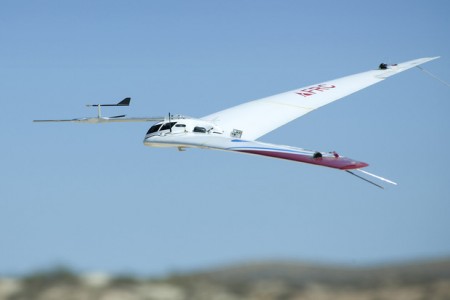July 3, 2015 – For humans to successfully endure a voyage to Mars and back NASA wants to have a better picture of where to land. So they want to deploy an airplane to fly over the surface.
Called the Prandtl-m, standing for Preliminary Research Aerodynamic Design to Land On Mars, would accompany a Martian rover planned for deployment in 2022. Prandtl-m would be ejected during the rover descent and would then overfly proposed landing sites. It would carry two payloads, a mapping camera and a high-altitude radiometer. The camera would provide high resolution images of the surface. The radiometer would measure atmospheric radiation levels from the point of deployment to the ground.
Flight time for the airplane is about 10 minutes with a range of about 32 kilometers (20 miles). Wingspan is 0.6 meters (24 inches), weight, 0.45 kilograms (1 pound) when deployed on Mars where gravity is 38% of Earth’s. Actual weight if deployed here on Earth is 1.18 kilograms (2.6 pounds). Composition will either be fiberglass or carbon fiber.
Several test flights are planned for Prandtl-m over the next two years first with parachute, then balloon and finally rocket deployments in the Earth’s atmosphere. If the design passes these tests then NASA will, subject to funding, pioneer airplane flight on Mars in the early 2020s.







